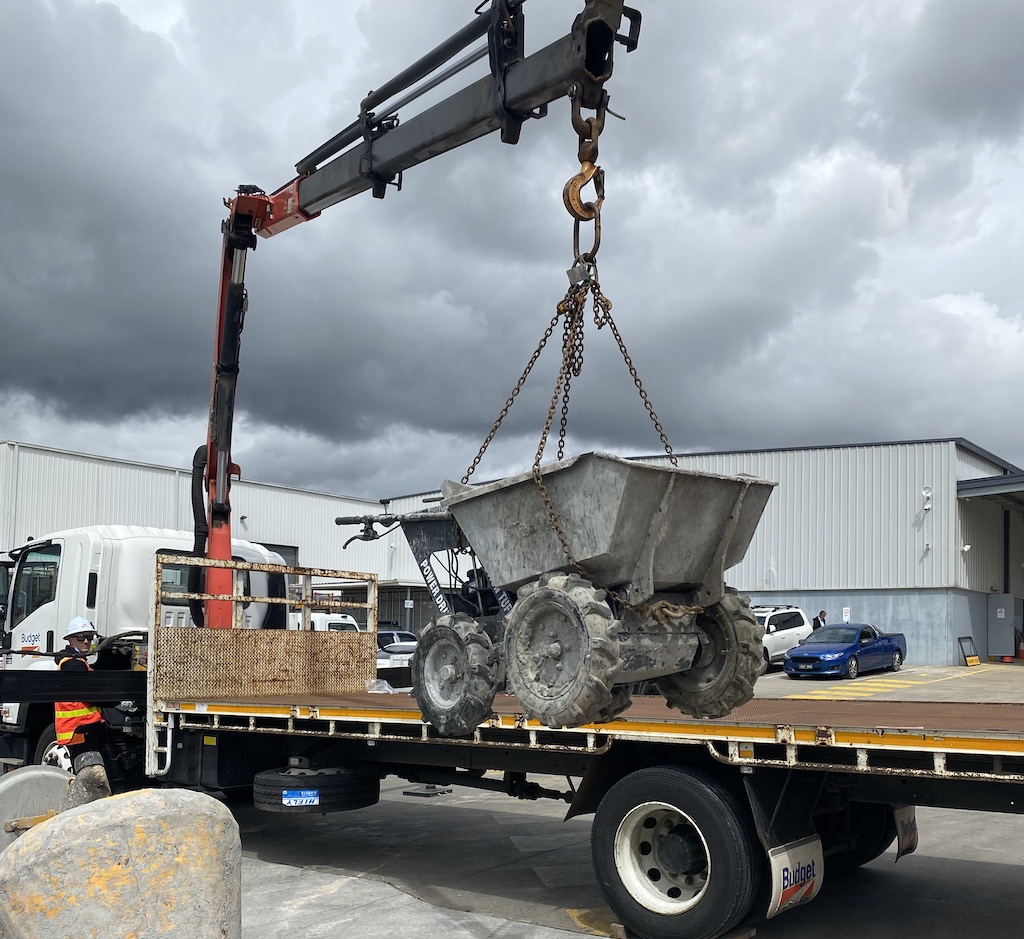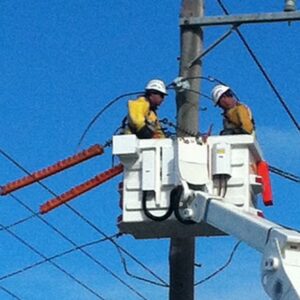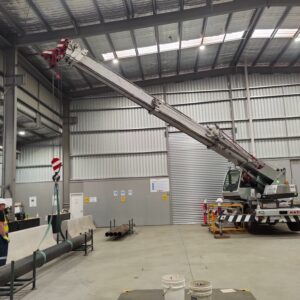Overview
This course is suitable for anyone who operates a vehicle loading crane with a capacity of less than 10 metre tonnes in a workplace. The metre tonnage of a crane can be found by multiplying the crane radius by the lifting capacity. This course is only ever conducted for group bookings on employers’ sites.
Why complete this Vehicle Loading Crane Course?
Section 21 of the Occupational Health and Safety Act 2004 (Vic.) requires that employers provide an adequate level of information, instruction, training and supervision to employees to enable them to work safely.
Note that WorkSafe Victoria requires that operators of vehicle loading cranes with a capacity of 10 metre tonnes or above (the metre tonnage of a crane can be found by multiplying the crane radius by the lifting capacity) hold a valid Licence to Perform High Risk Work (CV Class). This course does not satisfy this requirement.
- Planning work and keeping safe
- Vehicle loading crane safety checks
- Safe use of vehicle loading cranes
- Minimum 18 years of age
- Experience working around machinery is preferred
How to Book
Click on the button below to make an enquiry and our Business Development Manager will be in touch.
Course Details
Language, Literacy and Numeracy Requirements
For the Vehicle Loading Crane Course, trainees must have adequate English language skills to safely complete tasks relating to working with vehicle loading cranes, such as being able to:
- Read and correctly interpret safe work method statements, vehicle loading crane specifications and load charts
- Complete required documentation relevant to vehicle loading crane operation, including completing risk assessments and vehicle loading crane logbook entries
- Ensure that the safe working load of the vehicle loading crane isn’t exceeded
- Speak English clearly in order to explain, describe and verify sometimes complex needs and issues
If a trainee is concerned that they may not have the capabilities described above, please contact WAM Training on 1800 143 343 for advice.
What is the Vehicle Loading Crane Course outcome?
Once competence is achieved, trainees will receive a Statement of Attainment and Proof of Training Card.
Additional Vehicle Loading Crane Course Information
- A maximum of 6 trainees can attend this course
- Trainees are required to wear Personal Protective Equipment (PPE) in accordance with your policies and procedures applicable to overhead crane use
- For identification, trainees should bring a driver’s licence or passport
- This course is delivered over 1 day face-to-face with a blend of classroom-based and practical activities
- Trainees are expected to have read the Vehicle Loading Crane Course Handbook prior to attendance which will be provided upon making a booking
What does the Vehicle Loading Crane Course assessment involve?
- Trainees will be assessed using a short-answer test and a practical assessment involving the operation of vehicle loading cranes
- Verbal assessments will not be conducted for this course (please refer to the Language, Literacy and Numeracy requirements outlined above)
Is a Dogging Licence also required?
Whilst a Dogging Licence is not a pre-requesite to this course, it is required by any person performing dogging work, which includes where the operator of a vehicle loading crane slings their own loads. See below information from our regulations.
Part 3.6 and Schedule 3 of the Occupational Health and Safety Regulations 2017 (Vic.) outline the requirement to hold a High Risk Work Licence if conducting dogging work, which is defined as one or both of the following:
- The application of slinging techniques, including the selection or inspection of lifting gear, to sling a load
- The directing of a crane or hoist operator in the movement of a load when the load is out of the operator’s view
Further, slinging techniques are defined as: “those slinging techniques that require the exercise of judgment in relation to the suitability and condition of lifting gear, and the method of slinging, by consideration of the nature of the load, its mass and its centre of gravity”.
Here’s a link to our Dogging Licence Course for further information.
If you have any questions about our Vehicle Loading Crane Course, please contact WAM Training on 1800 143 343.
What sorts of cranes does this course cover?
Our course covers vehicle loading cranes with a capacity of 10 metre tonnes or less.
How can I tell if our crane is 10 metre tonnes or less?
You need to multiply the lifting capacity in tonnes by the radius in metres at all known points across the load chart and make sure that they never exceed 10 tonnes. For example:
- 10t lifting capacity at 1m radius = 10m/t
- 1t lifting capacity at 10m radius = 10m/t
But if the crane could also lift 4t at 3m radius, it would be a 12m/t crane.
The best thing to do is to email us a photo of the lifting chart and we can double-check.
What type of training is needed for vehicle loading cranes with a capacity over 10 metre tonnes?
A Licence to Perform High Risk Work (Class CV) licence is required for vehicle loading cranes with a capacity over 10 metre tonnes. We’re not offering this course.
Are side-loader cranes covered by this course?
No, side-loaders require manufacturer-specific training.







Con –
Trainer was fantastic! Explained everything in detail.
Daniel –
Very Good Course – Well facilitated
Antonio –
Great instructor kept the course entertaining rather than just follow the text book Lots of useful tips in real life situation and where to look out to keep safe. Not just in normal working environment but in other areas with potential hazards too.
Lawrence –
Was fantastic training, years of experience, wrapped up into a neat easy to understand package.
Henry –
WAMs instructors are extremely professional and knowledgeable – there wasn’t a question that they couldn’t answer. Highly recommended to everyone who wants to walk out of a course feeling competent and positive about using the ticket/cert.